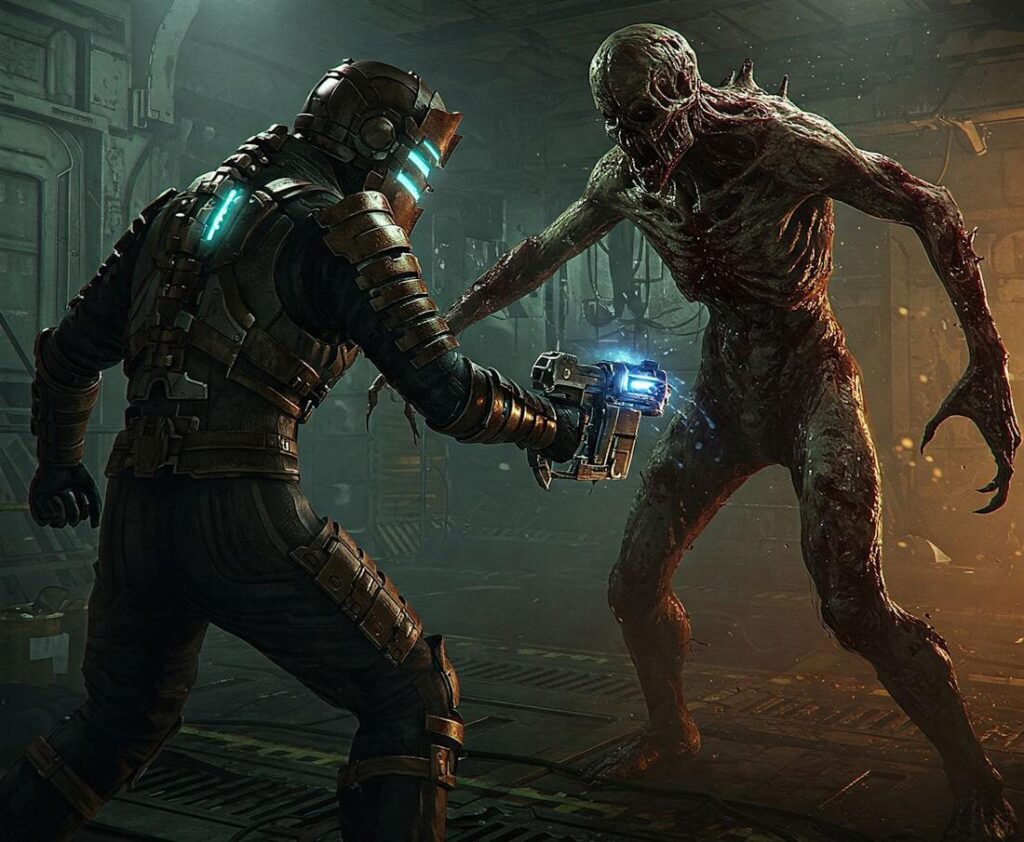Introduction to Open-World Storytelling
Open-world storytelling has emerged as a significant narrative framework within the gaming industry, redefining the boundaries of player engagement and immersion. This storytelling approach allows players to explore expansive virtual environments at their own pace, often leading to a more personalized gaming experience. The origins of open-world games can be traced back to early titles in the 1980s, such as ‘Adventure’ on the Atari 2600, which featured non-linear gameplay elements, but it was not until the 1990s that the genre began to truly take shape with titles like ‘The Legend of Zelda: Ocarina of Time’ that combined exploration with a rich narrative.
As technology advanced, so too did the potential for deeper narratives within open-world environments. Early open-world games often grappled with narrative limitations, struggling to balance player freedom with cohesive storytelling. Many titles resorted to basic quest structures or fragmented storylines, resulting in a disconnection between the player and the game’s narrative arc. Players could traverse vast landscapes, but they frequently found themselves without a meaningful story tethering their adventures.
However, the evolution of open-world storytelling has led to a growing emphasis on creating engaging narratives that interweave seamlessly with the gameplay experience. Developers have increasingly recognized the importance of strong character development and intricate plots, prompting a departure from traditional storytelling constraints. In this regard, ‘Red Dead Redemption 2’ stands out as a hallmark of innovation within the genre, breaking through the conventional limits imposed by earlier games. By weaving a complex narrative into the very fabric of its open world, it not only enhances player engagement but also sets a new benchmark for future storytelling in video games.
Plot Overview of Red Dead Redemption 2
‘Red Dead Redemption 2’ unfolds in the late 1890s, presenting players with a vast and richly detailed open world that captures the essence of the declining American frontier. The narrative centers around Arthur Morgan, a senior member of the Van der Linde gang, which is struggling to adapt to a rapidly changing society. This evolving context serves as the backdrop for Arthur’s internal conflict and moral dilemmas, as he grapples with loyalty to his gang and his own burgeoning sense of morality.
As the story progresses, players are introduced to a cast of complex characters, each contributing to the overarching narrative. Dutch Van der Linde, the charismatic leader of the gang, embodies the idealism of a bygone era, while John Marston, a younger gang member, represents the younger generation’s struggle for redemption and survival. Their relationships are further complicated by the gang’s encounters with law enforcement, rival gangs, and the encroachment of civilization, illustrating the chaos of the declining Wild West.
The game’s setting serves not just as a backdrop but as an integral part of the storytelling. The stunning landscapes, from snow-capped mountains to sprawling plains, enrich the narrative experience, allowing players to immerse themselves fully in the protagonist’s journey. The tension between loyalty and betrayal creates a central conflict that drives the plot forward and reflects broader themes of redemption, survival, and the consequences of choices.
The layering of characters, settings, and events creates a compelling narrative tapestry that is distinctly woven into the game’s expansive open world. Each element of the plot is intricately connected, inviting players to explore the consequences of their decisions within the complex social fabric of the era, ultimately redefining open-world storytelling in video games.
Character Development and Emotional Depth
One of the paramount achievements of ‘Red Dead Redemption 2’ lies in its profound character development and emotional depth, aspects that elevate the narrative beyond traditional storytelling in video games. At the center of this intricate web is Arthur Morgan, the game’s protagonist, whose complex personality is meticulously crafted throughout the gameplay. As players journey with Arthur, they witness a character in moral conflict, grappling with his loyalty to the Van der Linde gang and his own sense of morality. This internal struggle is not only relatable but also serves to enhance the emotional weight of the overall narrative.
Arthur’s interactions with other characters in the game provide significant depth, forging connections that resonate deeply with players. The supporting cast, including John Marston, Dutch Van der Linde, and Sadie Adler, are developed with equal care, contributing rich backstories and emotional arcs. Each character embodies distinct motivations and conflicts, creating a tapestry of relationships that reflect themes such as loyalty, betrayal, and redemption. The dynamic between Arthur and John, in particular, evolves from camaraderie to a poignant sense of loss, encapsulating the game’s overarching theme of the fading Wild West.
The game excels in allowing players to influence the emotional trajectory of Arthur’s journey. Through moral choices and interactions, players can shape Arthur’s character development, which adds a layer of personal investment in the story. The emotional depth is further reinforced by the game’s stunning visual storytelling and soundtrack, amplifying moments of heartbreak and triumph. Overall, the character development in ‘Red Dead Redemption 2’ not only bolsters individual narratives but also serves to enrich the thematic complexity, ensuring a deeply engaging experience that resonates well beyond mere gameplay.
Environmental Storytelling and Immersion
‘Red Dead Redemption 2’ exemplifies how environmental storytelling can be effectively utilized to enhance the overall immersion in a game. The developers at Rockstar Games have meticulously crafted a vast and dynamic world that conveys intricate narrative elements through its geography, weather, and non-playable character (NPC) behaviors. This attention to detail enables players to engage with the game environment on a profound level, enabling a more rich and varied storytelling experience.
The geography of ‘Red Dead Redemption 2’ is diverse, ranging from sprawling plains and dense forests to snowy mountaintops and bustling towns. Each location is not merely a backdrop; it serves a narrative purpose, reflecting the cultural and historical context of the game’s setting. For instance, the contrast between the rugged wilderness and the increasing industrialization in the towns subtly illustrates the broader themes of change and progress. Players are not simply traversing these landscapes; they are experiencing a world steeped in story, shaped by the interactions between the land and its inhabitants.
Moreover, the dynamic weather system in ‘Red Dead Redemption 2’ plays a crucial role in immersing players. Rainstorms, fog, and varying seasons create an ever-changing atmosphere that influences the mood of the narrative and enhances player engagement. For instance, a sudden rain can impact visibility and the behavior of NPCs, illustrating how the environment affects the lives and interactions of characters within the game. This careful integration of environmental variables contributes to a cohesive narrative, deepening the player’s sense of immersion.
Additionally, NPC behaviors add layers to the storytelling, as their reactions to environmental changes and player actions reflect the consequences of the game’s events. Interactions are often influenced by weather patterns, time of day, and even location, allowing players to witness how the world adapts and responds to their presence. Thus, environmental storytelling in ‘Red Dead Redemption 2’ creates a rich tapestry where every element—geography, weather, and character behavior—collaborates to form an immersive narrative experience. This intricately designed world is a testament to the power of environmental storytelling in redefining open-world gaming.
Dynamic Choices and Consequences
One of the defining features of ‘Red Dead Redemption 2’ is its innovative approach to storytelling through dynamic choices and their associated consequences. Unlike many traditional narrative-driven games, where encounters and outcomes often follow a linear progression, this title empowers players with the ability to shape their own unique experiences within the expansive open world. The game meticulously weaves in elements of player agency, allowing choices to significantly impact character relationships and the overarching narrative.
Throughout the game, players encounter pivotal decision points that can alter the course of events and affect character interactions. For instance, how a player responds to bounty hunters or law enforcement can influence their reputation within the world and affect how NPCs react to them subsequently. Choices are not just about immediate outcomes; they have lingering effects that persist throughout the game, creating a tapestry of interconnected story threads. This sense of agency encourages players to engage more deeply with the narrative and consider the moral implications of their actions, which enhances the emotional weight of their decisions.
Moreover, the game features a robust honor system that tracks players’ actions, rewarding or penalizing them based on the choices they make. This system promotes a sense of accountability and aligns closely with the principles of morality, giving weight to the notion that choices lead to consequences. As players navigate the world of ‘Red Dead Redemption 2,’ they are constantly reminded that their actions matter, resulting in a more immersive storytelling experience. The emphasis on dynamic choices not only redefines how narratives are crafted in open-world games but also sets a new standard for player engagement in interactive storytelling.
The Role of Side Missions and Subplots
In ‘Red Dead Redemption 2,’ side missions and subplots play a pivotal role in enriching the game’s overarching narrative and expanding the player’s experience. Unlike traditional open-world games, where these missions often serve as mere distractions, the side quests in this title are intricately woven into the game’s fabric, reflecting deep themes of morality, survival, and the complexity of human relationships. Each side mission typically reveals more about the characters’ backgrounds, traits, and motivations, thus enhancing the storytelling.
The development of Arthur Morgan, the game’s protagonist, is profoundly influenced by these side interactions. Players encounter various characters whose lives often parallel central themes of loss, redemption, and ethical dilemmas. For instance, a mission may revolve around helping a stranger in distress, which not only gives players insight into Arthur’s moral compass but also showcases the socio-economic struggles of the game’s setting. The emotional weight of these missions often extends beyond gameplay mechanics, inviting players to reflect on the choices they make, reinforcing the narrative’s profundity.
Moreover, the subplots often feature characters from different walks of life, highlighting the diversity and richness of the world. Engaging with these side quests facilitates a deeper understanding of the societal norms and issues present during the late 19th century in America. The deliberate integration of these missions ensures that players feel a genuine connection to the characters and their stories. While the main plot provides an overarching framework, it is the side missions that lend a sense of authenticity and complexity to the narrative tapestry of ‘Red Dead Redemption 2,’ making it a landmark title in open-world storytelling.
Themes and Social Commentary
In ‘Red Dead Redemption 2,’ the narrative exploration extends far beyond the confines of typical video game storytelling, delving into profound themes of loyalty, morality, and the unavoidable decay of traditional ways of life. These thematic elements are intricately woven into the game’s vast open world, creating a rich tapestry that invites players to reflect on the consequences of their choices. Loyalty, a central pillar of the protagonist Arthur Morgan’s journey, is portrayed in complex ways, highlighting the bonds formed between gang members and the conflict between personal values and collective responsibilities. This dynamic underscores the tension between individualism and loyalty to a group, prompting players to question their own definitions of fidelity and allegiance.
The exploration of morality is equally significant in ‘Red Dead Redemption 2.’ Through the choices presented to players, it becomes evident that morality in the game’s context is not black and white but rather a spectrum influenced by circumstances. This moral ambiguity serves as a critique of righteousness and justice, drawing parallels to real-world dilemmas, where what is deemed “right” can shift based on perspective. Players are encouraged to contemplate the deeper implications of their actions within the game, such as how violence can lead to both liberation and destruction, a reflection of societal struggles that resonate beyond the screen.
Furthermore, the narrative poignantly addresses the decay of the old ways, symbolizing the passage from a rugged, free-spirited lifestyle to one dominated by industrialization and modernity. This transition serves as a commentary on the displacement of traditional cultures and the inexorable march of progress that often marginalizes those who cannot adapt. By juxtaposing these elements, ‘Red Dead Redemption 2’ effectively illustrates the fragility of human connections and the often harsh realities of existence, prompting players to engage with themes that are relevant to contemporary societal issues.
Comparative Analysis with Other Open-World Games
‘Red Dead Redemption 2’ has garnered critical acclaim for its storytelling and immersive world, but how does it measure up against other significant open-world titles? When we consider games such as ‘The Witcher 3: Wild Hunt,’ ‘Elden Ring,’ and ‘Grand Theft Auto V,’ we can identify distinct elements that highlight the narrative prowess of ‘Red Dead Redemption 2.’
Starting with ‘The Witcher 3,’ it’s evident that both games prioritize deep narratives and character development. However, ‘Red Dead Redemption 2’ sets itself apart with its meticulous attention to the emotional arcs of its characters, framing their stories within the historical context of America’s decline during the late 1800s. This allows players to engage with themes of loyalty, regret, and societal change in a way that feels personal and poignant. While ‘The Witcher 3’ often presents its quests on a fantasy scale, ‘Red Dead Redemption 2’ offers a raw and gritty realism that amplifies the weight of its narrative choices.
Moving to ‘Elden Ring,’ an acclaimed title renowned for its open-world design and lore, the divergence becomes more apparent. While ‘Elden Ring’ excels in environmental storytelling and world-building through exploration, it often relies on fragmented narratives and indirect character engagement. In contrast, ‘Red Dead Redemption 2’ employs a robust central storyline supported by nuanced side quests, ensuring that every character and encounter contributes meaningfully to the overarching narrative.
Finally, when comparing ‘Red Dead Redemption 2’ with ‘Grand Theft Auto V,’ both games are products of the same developer, Rockstar Games. However, ‘GTA V’ focuses on satirical portrayals of modern society through a more chaotic lens. In contrast, ‘Red Dead Redemption 2’ emphasizes a more earnest storytelling approach, allowing players to explore moral complexities in a more profound manner. The character-driven narrative encourages the players to connect emotionally with Arthur Morgan and his journey, making it a unique entry in the realm of open-world gaming.
Conclusion: The Future of Open-World Narratives
In considering the profound impact of ‘Red Dead Redemption 2’ on open-world storytelling, one can see that it has not merely raised the bar; it has redefined the boundaries of narrative in gaming. The level of detail embedded in the characters, the intricacies of the plot, and the emotional depth of the interactions creates a benchmark that future games will strive to reach. This title showcases how a meticulously crafted world can enhance the player’s experience, allowing them to become emotionally invested in a narrative that unfolds organically within the game environment.
The innovative techniques used in ‘Red Dead Redemption 2’, such as dynamic interactions and character-driven storytelling, signal a shift towards more immersive experiences. Future open-world titles are likely to adopt similar strategies, emphasizing character development and emotional engagement, as players increasingly seek narratives that resonate on a personal level. This evolution also suggests a move away from purely action-driven game designs to those that prioritize story as a core component of the gameplay experience.
Moreover, as technology advances, the potential for even richer storytelling scenarios grows. Enhanced artificial intelligence, improved graphics, and deeper world-building mechanics are all expected to play significant roles in shaping the future of open-world narratives. As game developers continue to explore and push the limits of interactive storytelling, we may witness the emergence of experiences that blend mechanics with narrative in unprecedented ways.
Thus, ‘Red Dead Redemption 2’ not only solidifies its place in gaming history but also paves the way for future narratives. The enduring legacy of this title lies in its ability to inspire innovative approaches to storytelling in open-world environments, likely influencing countless upcoming projects as they aspire to capture the intricate relationships between gameplay, story, and player experience.



